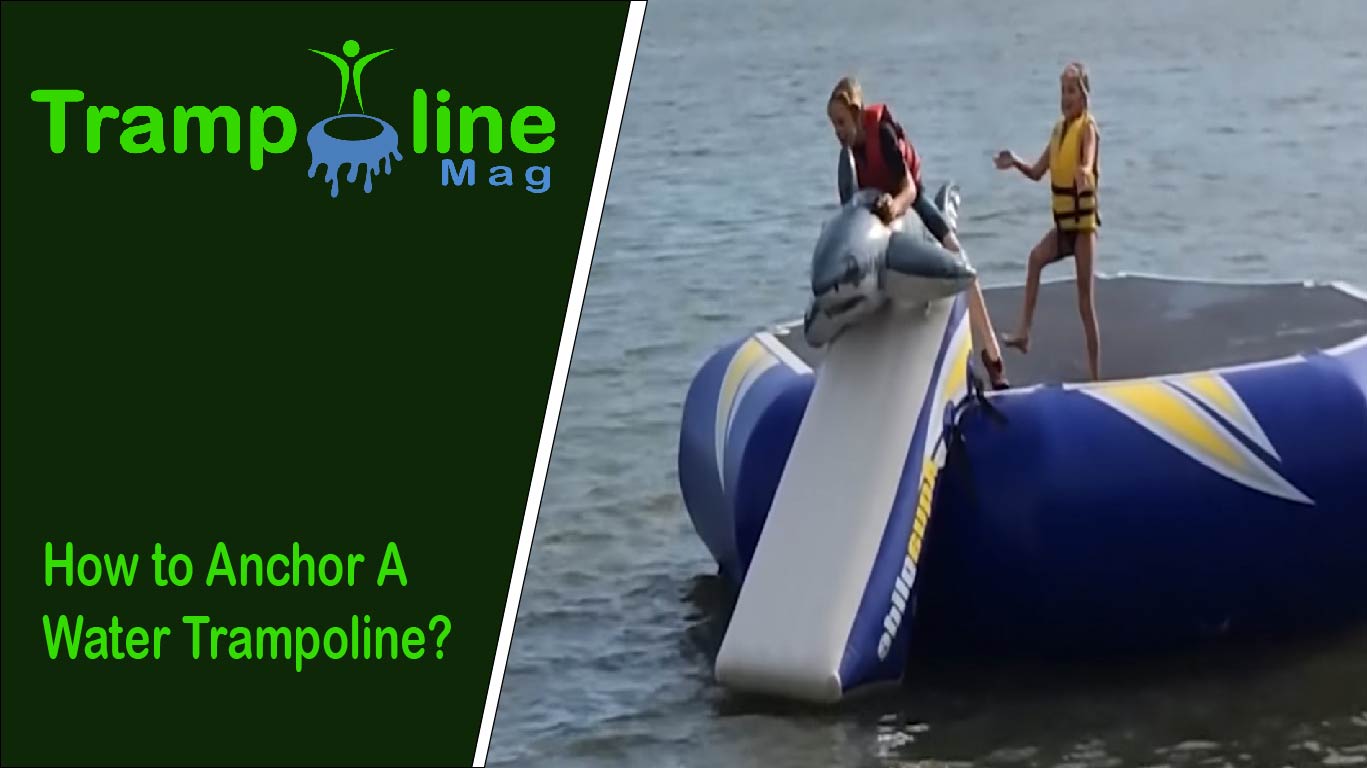Last Updated on May 3, 2023 by Charlie Nash
If you’re a fan of outdoor water activities, a water trampoline can be an exciting addition to your aquatic fun. However, to ensure your safety and maximize your enjoyment, proper anchoring is essential. A securely anchored water trampoline can withstand the forces of wind and waves, keeping it stable and preventing accidents. But with so many anchoring options available, it can be challenging to determine which method is best for your trampoline and water conditions.
Without proper anchoring, your water trampoline can move around or, even worse, flip over. In this guide, we’ll provide you with everything including simple steps on how to anchor a water trampoline like a pro, ensuring a safe and enjoyable experience for all.
Tips For Anchoring a Water Trampoline
- Location: Choose a location for your water trampoline away from swimmers, diving areas, and other potential hazards. The best spot is in the middle of a large, open body of water.
- Enough Water Depth: Make sure the location you choose has enough depth of water. For example, a water trampoline needs at least 8 feet (2.4 meters) of water to be safely anchored.
- Anchor with Weights: One of the simplest ways to anchor a water trampoline is by using weights. You can use sandbags, concrete blocks, or other heavy objects to hold the trampoline in place. Place the weights on the trampoline frame or on the ropes attached to the frame. The weights will keep the trampoline from moving and provide stability.
- Anchor with Stakes: If you are anchoring your trampoline in shallow water or a sandy bottom, you can use stakes to hold it in place. Hammer the stakes into the bottom and attach the trampoline ropes to the stakes. This method is not suitable for rocky or hard bottom substrates.
- Anchor with Augers: If you are anchoring your trampoline in a lake or river with a soft bottom, you can use augers to hold it in place. Augers are screw-like devices that are twisted into the bottom substrate. You can attach the trampoline ropes to the augers for stability.
- Anchor with Sand Screws: Sand screws are similar to augers but are designed specifically for use in sand or soft bottom substrates. You can screw the sand screws into the bottom and attach the trampoline ropes to them.
- Anchor with the Boat: If you are using your trampoline in open water or in an area with strong currents, you can anchor it to a boat. You will need to attach a rope to the boat and then attach the trampoline ropes to the same rope. This method is suitable for deep water or areas with strong currents.
When anchoring your water trampoline, it’s important to use enough anchor points to ensure stability. The number of anchor points you need will depend on the size and type of trampoline and the conditions of the water. Always follow the manufacturer’s instructions for anchoring your trampoline and make sure to regularly check the anchor points for wear and tear. Enjoy your water trampoline safely!
What Do You Need to Anchor a Water Trampoline?
You will need a water trampoline, an anchor, and a rope. The anchor will keep the trampoline in place so that you can enjoy your time on the water. We recommend these to use to anchor a water trampoline:
- Sandbags, concrete blocks, or other heavy objects (Whichever you can find easily)
- Stakes or Anchors
- Rope (Jerk bearing Elastic rope)
The rope will be used to secure the anchor to the trampoline; let’s see how to do it:
How To Anchor a Water Trampoline? Step-By-Step Guide
- Step 1. Find a suitable location for your water trampoline. Make sure the area is free of obstacles such as rocks, branches, or other debris that could damage the trampoline or cause it to flip over.
- Step 2. Once you have found a suitable location, place the water trampoline in the water. Ensure that the trampoline is fully inflated and that all safety valves are closed.
- Step 3. Attach the rope to the anchor. Ensure the rope is long enough to reach from the anchor to the trampoline.
- Step 4. Tie the rope to the anchor. Make sure that the knot is secure.
- Step 5. Test the anchoring system by pulling on the rope. The trampoline should not move. If it does, adjust the anchor or rope until the trampoline is secure. You have now successfully anchored your water trampoline! Enjoy your time on the water, and be safe!
Now that you know how to anchor a water trampoline, you can enjoy safe fun on the water.
Also Read: 10 Best Water Trampolines
How To Remove Anchors from The Trampoline When You’re Done Using It?
When you’re finished using your trampoline, it’s essential to remove the anchor so that it can be properly stored.
- Remove any accessories: Before removing the anchors, remove any accessories or attachments from the trampoline, such as the ladder or slide. This will make it easier to move the trampoline and avoid damage to the accessories.
- Loosen the ropes: Loosen the ropes that are attached to the anchors. You can use a winch or a wrench to loosen the nuts on the anchor ropes.
- Pull out the anchors: Once the ropes are loosened, you can pull out the anchors from the bottom substrate. For stakes, use a stake puller or a shovel to loosen the anchor from the bottom. For augers and sand screws, use a wrench to unscrew the anchors from the bottom.
- Clean the anchors: After removing the anchors, clean them thoroughly with fresh water to remove any dirt or debris. This will help prevent rust and corrosion.
- Store the anchors: Store the anchors in a dry, cool place to prevent rust and corrosion. Make sure the anchors are stored in a way that prevents them from getting tangled or damaged.
How To Store Anchors When Not in Use?
Anchors should be stored in a dry, well-ventilated area. If possible, keep them in a cool, dark place. Most importantly, ensure that the area is free of corrosive chemicals or fumes.
If you are storing them outdoors, cover them with a tarp or other waterproof material to keep them from rusting. Indoors, you can store them in a garage or shed.
If you live in an area with high humidity, you may consider storing them in a climate-controlled environment.
In general, storing your anchors in a place where they will not be subject to extreme temperature changes or humidity is best. Be sure to check on them periodically to ensure they are still in good condition and free of rust.
FAQs
Conclusion
As we learned in this article, it’s essential to know how to install and maintain a water trampoline. You can get started by learning how to anchor your trampoline correctly. Once you’ve learned how to anchor your trampoline, you’ll be able to enjoy your trampoline safely and securely.

I have been involved in the world of gymnastics for over 20 years! I started gymnastics when I was 5 years old and excelled in the sport eventually finding a way onto a team where I competed throughout high school and into college. With a passion for gymnastics and specifically Trampolines, I have decided to start a blog TrampolineMag, A trampoline magazine. I will share all the reviews, suggestions, and things I have learned about trampolines to make your trampoline experience fun and safe.

